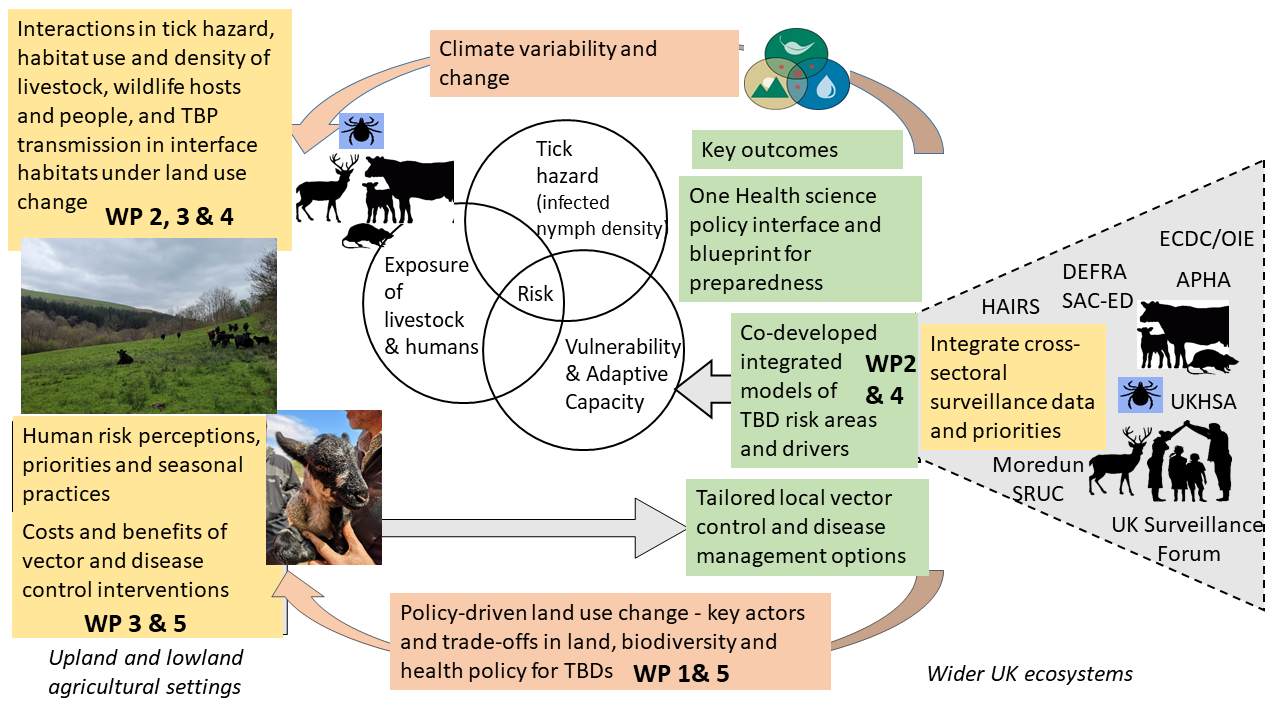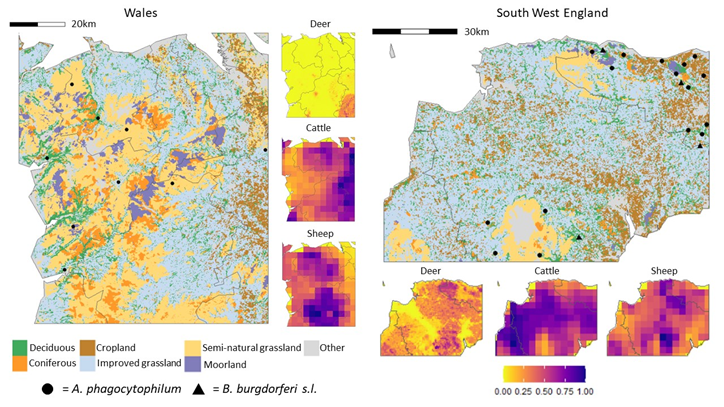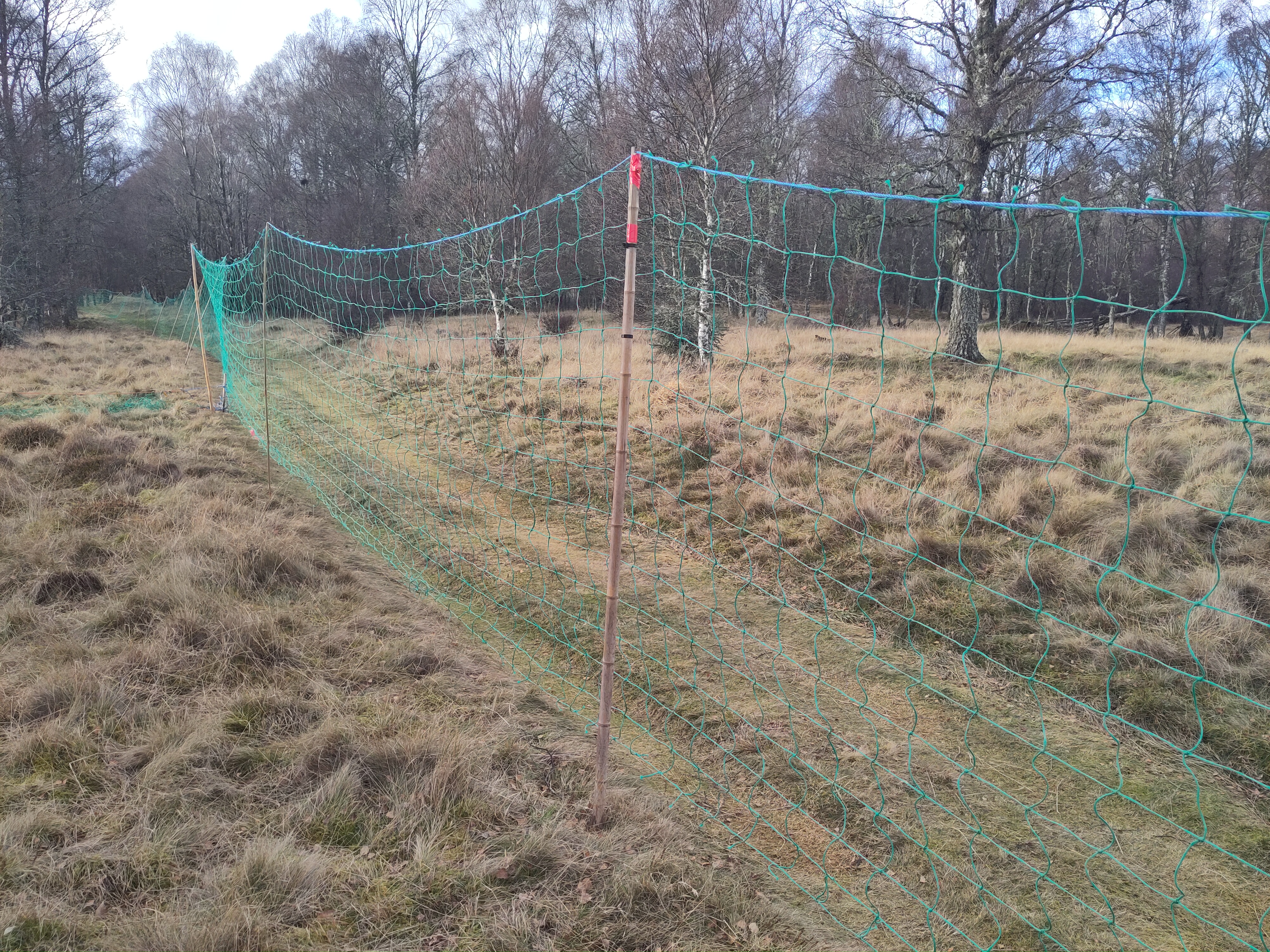OPTICK aims to advance the evidence base and tools to inform mitigation of current and emerging tick-borne diseases with the following key objectives. Please click through the images to review:
Research Approach
*More information about the Global Burden of Animal Diseases project can be found on these links:
Co-Production Approach
To achieve these objectives, OPTICK is taking an integrated One Health co-production approach. Co-production means that cross-sectoral stakeholders in agricultural landscapes, health and policy are involved in framing the research and co-developing interventions via focus groups, workshops and interviews (See Get Involved page). Integrated research activities include ecological and epidemiological surveys of interactions between ticks, livestock, wildlife and people across vulnerable lowland and upland agricultural landscapes (second figure), with surveys and interviews to understand farmer and land owner risk perceptions, priorities and practices, and local to national scale modelling to understand human exposure, geographically high risk areas, impact of changes in woodland management on farms and effectiveness of vector control and disease management.
OPTICK One Health conceptual framework

Fig 1. OPTICK One Health conceptual framework to enhance understanding, surveillance and mitigation of TBD’s
Study Landscape

Fig 2. Maps of study landscapes showing land use types, relative density of deer, cattle and sheep and locations where the agents of Tick-borne fever (A. phagocytophilum) and Lyme Disease (B. burgdorferi s.l.) have been found in questing ticks.
Research Approach
OPTICK aims to advance the evidence base and tools to inform mitigation of current and emerging tick-borne diseases with the following key objectives:
- Establish a strong cross-sectoral science-policy interface involving key national and regional level actors in land, livestock and tick-borne disease management, understand their priorities, decision making and needs for evidence and decision support.
- Co-develop and operationalise novel risk modelling frameworks, integrating cross-sectoral surveillance data, to (i) identify the role of climate, host and land use change drivers in restricting current and future UK foci of tick-borne diseases and (ii) identify gaps in and hotspots for targeting surveillance
- Quantify impacts of agricultural landscape structure and management on transmission dynamics between livestock, wildlife hosts and ticks, and consequences for current and future risk of human tick-borne disease (Lyme Disease) and livestock disease caused by neglected animal tick-borne pathogens (Anaplasma, Babesia, louping ill virus), through fieldwork and modelling.
- Estimate the baseline distribution and economic burden of tick-borne diseases in livestock in endemic areas of the UK leveraging economic approaches from Global Burden of Animal Diseases project.
- Co-develop optimal local tick control and disease management strategies by understanding the costs and benefits of potential strategies and their alignment with perceptions practices and priorities of land managers, livestock owners and policy makers.
- Co-produce surveillance tools, risk guidance and modelling frameworks to enhance preparedness for emerging and endemic tick-borne diseases, including a blueprint for more integrated One Health system responses.
